Last Updated on August 7, 2024 by Team Ideas24
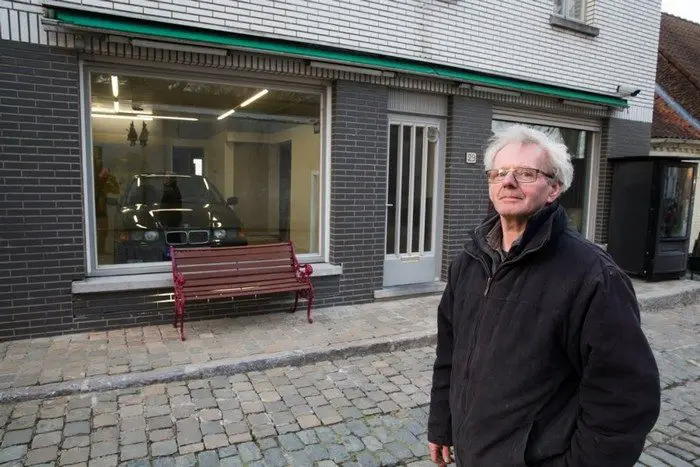
The government said he is not allowed to build a garage door, so he didn’t. Or at least that’s what they think!
Erik Vekeman, a villager from Zegelsem in Belgium, wanted to convert part of his wife’s former grocery store into a garage. But because the village is being protected and preserved, the local municipality denied him the permit to install a garage door.

His solution? Plain ingenious! With 500 euros and hardwork he was able to turn the building’s façade into the garage door itself! The window and the wall right below it swings open as a secret garage door, allowing him to drive his car out and park it back inside.
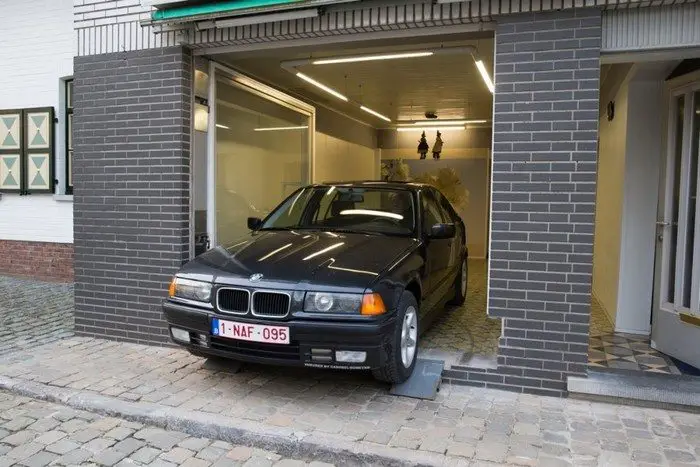
He says he can get his car out of the garage in less than two minutes, but he still has plans to automate his secret garage door for faster operation.
What can you say about his story? Let us know through the comments section!
Click on any image to start lightbox display. Use your Esc key to close the lightbox. ?
Building a Secret Garage Door
Creating a secret garage door can be an ingenious way to add functionality and surprise to your home’s exterior. Here’s a step-by-step guide on how to build one, including the materials and tools you’ll need.
Materials:
- Plywood sheets (thickness to match your exterior wall)
- 2×4 lumber (for framing)
- Hinges (heavy-duty)
- Magnetic locks
- Paint (to match your exterior)
- Weather stripping
- Garage door opener (optional for automation)
- Screws and bolts
Tools:
- Circular saw
- Drill
- Screwdriver
- Measuring tape
- Level
- Paintbrush or roller
- Sandpaper
Instructions:
- Planning and Design:
- Measure the existing exterior space where you want to install the secret door. Consider the size of your vehicle to ensure enough clearance.
- Design the door to blend seamlessly with your home’s facade. This might involve matching architectural elements like trim, color, and materials.
- Frame the Door:
- Use 2×4 lumber to create a frame for your garage door. Ensure the frame is sturdy enough to support the weight of the plywood and additional hardware.
- Attach hinges to the frame, ensuring they are strong enough to handle frequent movement and the weight of the door.
- Prepare the Plywood:
- Cut the plywood sheets to fit the frame. Sand down any rough edges to prevent catching and to ensure a smooth operation.
- Test fit the plywood on the frame to make sure it moves freely and fits well within the designated space.
- Install Weather Stripping:
- Apply weather stripping around the edges of the frame to seal out moisture and drafts when the door is closed.
- This step is crucial for maintaining the interior environment and protecting the mechanism from weather damage.
- Mount the Door:
- Secure the plywood to the frame using screws. Make sure it’s aligned and balanced.
- Double-check the operation of the door to ensure it opens smoothly and securely fits when closed.
- Paint and Finish:
- Paint the door to match your house’s exterior. You might need several coats to ensure uniformity and disguise any seams or edges that could give away the door’s presence.
- Allow the paint to dry completely between coats.
- Install Locking Mechanism:
- Install a magnetic lock or other discreet locking mechanisms to keep the door secure when not in use.
- Ensure the lock is accessible but hidden to maintain the door’s secret nature.
- Automate the Door (Optional):
- If desired, install a garage door opener to automate the opening and closing of the door. This step requires additional electrical work and should be handled by a professional if you’re not experienced with electrical systems.
- Final Adjustments:
- Make any necessary adjustments to the door to ensure it operates smoothly and securely.
- Test the door several times to confirm that it opens and closes as expected and remains well-concealed when shut.

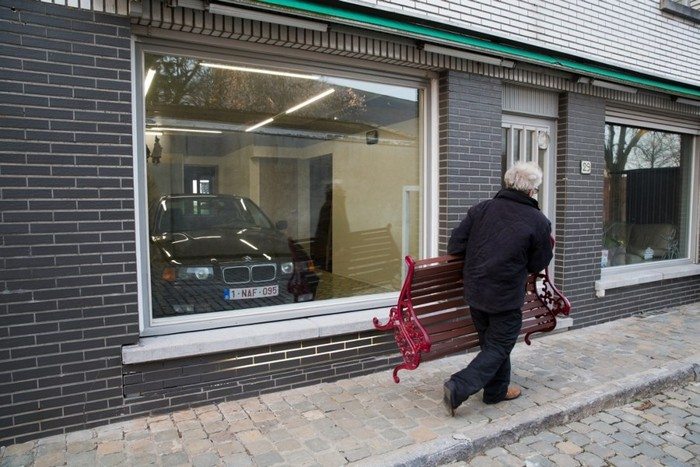
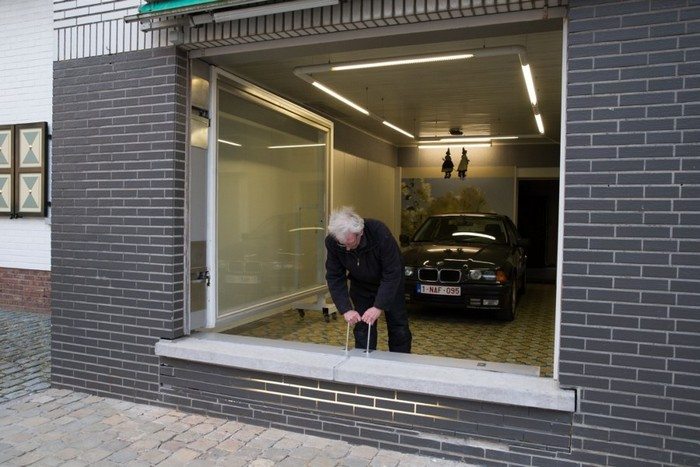
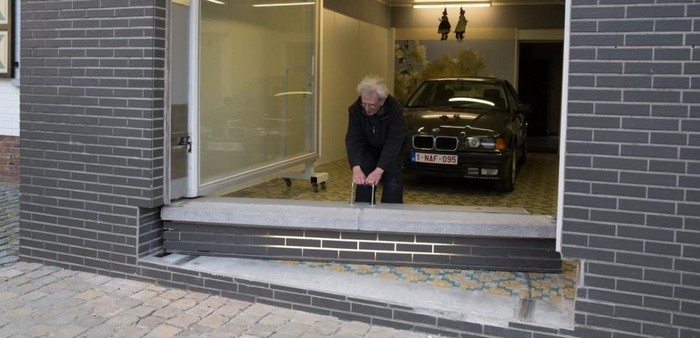

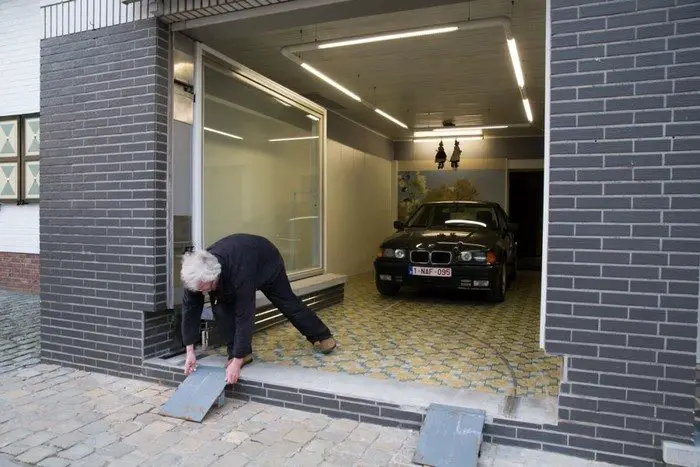

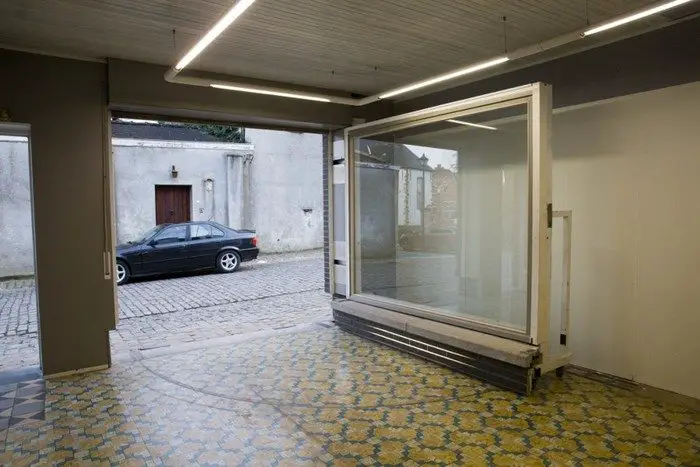
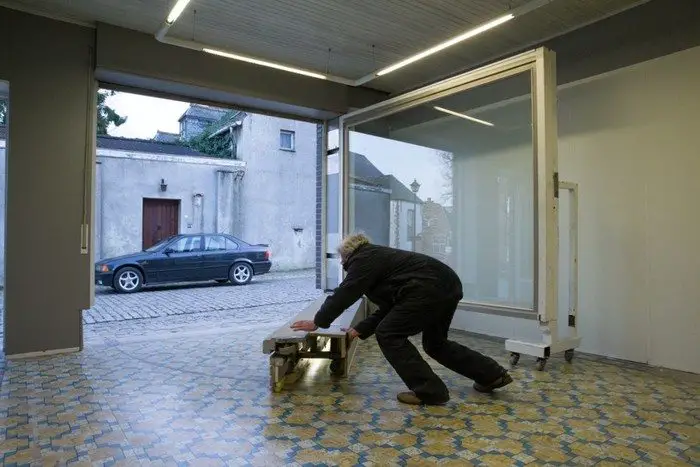
Design and Engineering
Designing and creating a secret garage door combines technical knowledge, imagination, and accuracy. This special project calls for a strong engineering approach to meet the functional needs of a garage door while preserving the façade of the house and requires careful planning to guarantee flawless integration with the current construction.
Conceptual Design
Conceptual design comes first in building a concealed garage door. This method entails seeing how the door will fit the outside of the house without revealing its existence. Achieving this calls for the design to take construction materials and architectural style into account.
If the façade is brick, for example, the door might be built with a faux brick panel or meticulously matched actual brick to produce a continuous, unbroken appearance. The secret is to make sure the door, closed, looks just like the rest of the home, therefore maintaining the mystery and secrecy of its purpose.
Structural Considerations
The structural stability of the hidden garage door comes first. The door has to resist the same environmental stressors as the rest of the construction since it forms part of the outside of the house and includes wind, rain, and thermal expansion.
Materials should be chosen by engineers that not only fit the current façade but also allow management of these loads. Particularly around the door frame, reinforcements could be required to help the weight of the façade-material-clad door not sagging or bending over time.
Mechanical Engineering
The mechanics of the secret garage door involve creating a reliable and smooth-operating opening mechanism. This system typically includes hinges, tracks, or rollers that are robust enough to support the weight of the door but discreet enough to keep the door’s secret nature.
For enhanced functionality, the design can integrate counterweights or tension springs to assist in the manual opening and closing of the door, or even include a motorized system for automatic operation. Each mechanical element must be precisely engineered to ensure longevity and ease of use, minimizing maintenance and potential malfunctions.
Safety Features
Safety is a critical aspect of the engineering process for any garage door, especially a secret one. The design must include fail-safes and balance systems to prevent the door from accidentally closing or causing injury.
Additionally, the inclusion of safety sensors can help detect obstructions to stop the door’s movement, similar to those used in conventional garage doors. These features are essential not only for the safety of the users but also for compliance with building regulations and standards.
Aesthetic Integration
Ultimately, the design and engineering process depends critically on the aesthetic integration of the secret garage door into the front of the house. This covers not just the construction and materials but also their color, texture, and even the aging process.
Often using aging procedures or using materials that weather at a comparable rate as those surrounding them, engineers and designers collaborate to guarantee that the appearance of the door changes congruently with the rest of the building.
By combining the science of engineering with the art of design, the building of a concealed garage door guarantees a product that not only quietly fulfills its role but also improves the general aesthetic and practical worth of the property.
Legal and Ethical Considerations
When integrating a secret garage door into your property, it’s important to navigate the complex landscape of legal and ethical considerations. This component of the project is crucial for ensuring that your innovative solution aligns with local regulations and respects community standards, thereby avoiding potential legal disputes or ethical dilemmas.
Compliance with Building Codes
The primary legal concern when installing a secret garage door is compliance with local building codes. These regulations are designed to ensure safety, structural integrity, and sometimes even aesthetic conformity within communities. Before embarking on the construction of a secret garage door, it’s imperative to secure the necessary permits and ensure that all aspects of the design meet the specified requirements. Failure to comply can lead to fines, forced removal of the non-compliant structures, or other legal repercussions.
Zoning Laws and Historical Preservation
Especially relevant to secret garage doors in historic or preservation districts, zoning laws may impose additional restrictions. These regulations can be particularly stringent, often designed to preserve the historical integrity and visual appearance of a neighborhood. In such cases, modifications that affect the external façade of a building, like a secret garage door, might require special approval from local preservation committees or similar bodies. Navigating these laws requires careful planning and, often, consultation with legal experts in property and municipal law.
Ethical Considerations
Beyond legal issues, there are ethical considerations to ponder when installing a secret garage door. For instance, the intention behind concealing a garage door could be perceived as deceptive by neighbors or community members, potentially leading to distrust or community discord. Ethically, it’s important to consider how such a project impacts the communal aesthetic and neighborhood security. Transparent communication with neighbors and community stakeholders about the project can alleviate concerns and foster a more supportive environment.
Neighbor Relations and Community Standards
Sometimes the installation of a secret garage door affects neighbour relations, especially in cases of a project started without previous notice. Legally speaking, even if you could be entitled to change your property, it is quite important to keep excellent ties with neighbours. Early in the planning process, ethically include people, addressing their issues, and making sure your changes do not compromise their quality of life or property values is vital.
Safety and Accessibility
Making sure the secret garage door follows safety and accessibility guidelines is also rather important. Apart from a legal requirement, this is an ethical one to stop mishaps or problems with accessibility. Essential elements of the design of the door are features including obvious safety instructions, emergency release mechanisms, and automatic stop functions.
Ensuring the success and sustainability of the project depends on negotiating the moral and legal terrain while installing a secret garage door. Compliance and community involvement must be proactive to guarantee that, even if the door fulfils its intended covert purpose, it does so within legal and community acceptable.
Conclusion
Secret garage doors offer an innovative solution for homeowners seeking functionality without compromising on aesthetics. These doors require careful consideration of design, legal compliance, and ethical standards to ensure they blend seamlessly into a property’s facade. Ultimately, when executed correctly, a secret garage door enhances both the value and the intrigue of a home.
Speaking of unique homes, check out our post on 3D-printed houses!




















